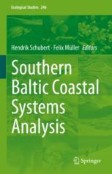Search
Search Results
-
Interactions between sediment characteristics and oxygen conditions at the sediment–water interface of reservoirs: influences on nutrient dynamics and eutrophication
Dissolved oxygen (DO) level at the sediment–water interface is one key factor controlling redox-sensitive processes, such as nutrient cycling....

-
Reduction of nutrient fluxes across the sediment–water interface and nutrient accumulation in lotus-fish co-culture aquaculture ponds
Continuously feed-based aquaculture leads to excessive nitrogen and phosphate loads, degrading the culture environment. In this study, lotus ( Nelumbo...

-
Invertebrate Activities in Wetland Sediments Influence Oxygen and Nutrient Dynamics at the Sediment-water Interface
In flooded soils and sediments, bioturbating invertebrates rework sediment and convey oxygenated surface water through burrowing, creating a mosaic...

-
Comparative bacteriome and antibiotic resistome analysis of water and sediment of the Ganga River of India
A comparative analysis between water and sediment can provide better information to understand the dynamics of the inhabitant microbiome and their...

-
Effects of water column depth and sediment base area on the bioturbation efficacy of freshwater operculate snails
The bioturbation potential of three freshwater operculate snails, Filopaludina bengalensis , Gabbia orcula and Melanoides tuberculata, was compared,...

-
Heavy Metal Concentrations in Water, Sediment, and Fish Species in Chashma Barrage, Indus River: A Comprehensive Health Risk Assessment
The increasing levels of heavy metals in aquatic environments, driven by human activities, pose a critical threat to ecosystems’ overall health and...

-
Diversity and functions of bacterial communities in water and sediment from the watershed of the Tama River flowing a highly urbanized area
Bacterial communities are important factors governing changes in river ecology. We evaluated the diversity of bacterial communities in sediment and...

-
Ecosystem bioelement variability is associated with freshwater animal aggregations at the aquatic-terrestrial interface
The impacts of animals on the biogeochemical cycles of major bioelements like C, N, and P are well-studied across ecosystem types. However, more than...

-
Ecological Connections Across the Marine-Terrestrial Interface in Chilean Patagonia
Chilean Patagonia encompasses the two southernmost terrestrial ecoregions of the temperate forest biome of South America (North-Patagonian and...
-
Microbiome variation at the clam-sediment interface may explain changes in local productivity of Chamelea gallina in the North Adriatic sea
BackgroundThe clam Chamelea gallina is an ecologically and economically important marine species in the Northwestern Adriatic Sea, which currently...

-
Spatial Ecosystem Service Assessment Across the Land–Sea Interface
Various approaches to map and assess ecosystem services (ES) have emerged in the past decades. Yet, they are still mainly focused on terrestrial...
-
Forest fire, thinning, and flood in wildland-urban interface: UAV and lidar-based estimate of natural disaster impacts
ContextWildland-urban interface (WUI) areas are facing increased forest fire risks and extreme precipitation events due to climate change, which can...

-
Sediment and Remediation of Aquaculture Ponds
The soil carries the water of the pond. The sediment or bottom mud of aquaculture pond is an important part of pond ecosystem. The nutrient exchange...
-
Patterns of Bioturbation and Associated Matter Fluxes
Bioturbation, the biogenic particle and fluid transport in sediments, is generally thought to be important in the context of matter fluxes and...
-
Isotropic Silver Nanoparticles from Cytobacillus kochii Strain SW6 Isolated from Bay of Bengal Sea Sediment Water and Their Antimicrobial, Antioxidant, and Catalytic Potential
Green synthesis of nanoparticles provides numerous advantages over physical and chemical methods because of low toxicity, high yields,...

-
Deep in Mud: Benthic Foraminifera Interface Marine Sediment-Water—Sampling, Handling, and Analyzing
Sampling shallow or deep environments requires different techniques due to particular and irregular morphology in the marine sediments worldwide....
-
Aquaculture ecosystem microbiome at the water-fish interface: the case-study of rainbow trout fed with Tenebrio molitor novel diets
BackgroundSustainable aquaculture relies on multiple factors, including water quality, fish diets, and farmed fish. Replacing fishmeal (FM) with...

-
Cyanobacteria and cyanotoxins in estuarine water and sediment
While transfer of freshwater cyanobacteria to estuaries has been observed worldwide, the associated transfer of cyanotoxins is less often reported,...

-
Sediment Transport Modeling through Machine Learning Methods: Review of Current Challenges and Strategies
Sediment transportation in rivers is considered as an important issue for designing and planning the water resources projects and can damage the...
-
Distribution Patterns of Microeukaryotic Community Between Sediment and Water of the Yellow River Estuary
Water and sediment have always been closely tied in aquatic systems. However, little information regarding the full extent of microeukaryotic...

